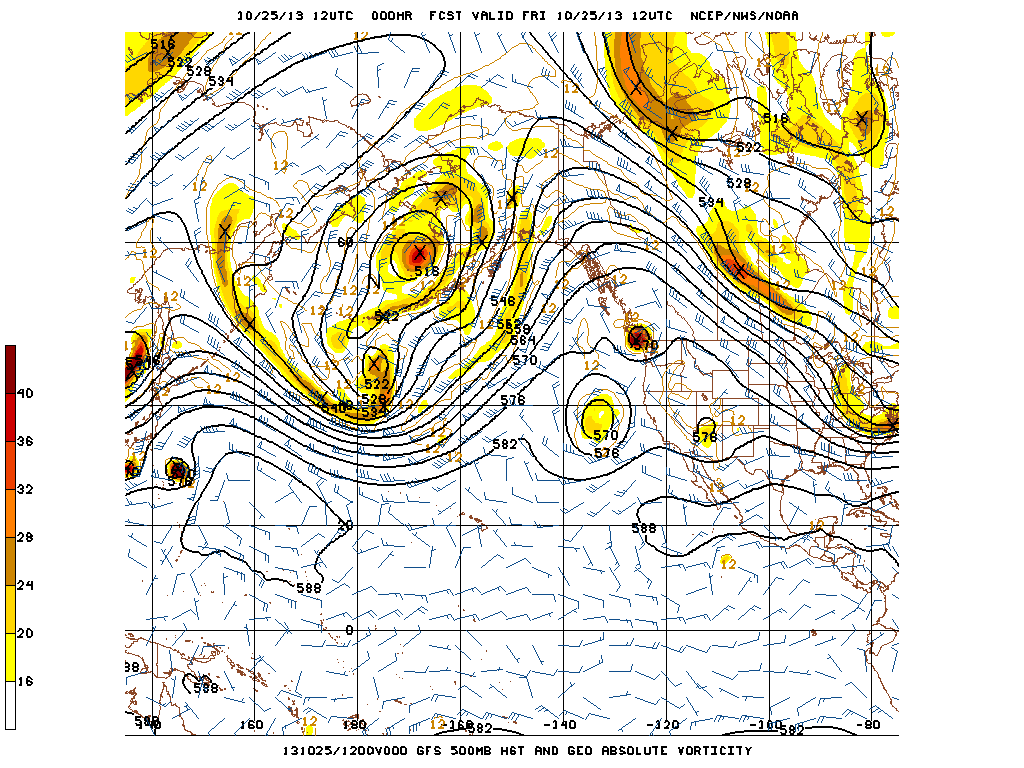Blowing Snow Event over Deline (YWJ)
April 08, 2016
Deline, Northwest Territories, is over southwestern corner of the Great Bear Lake. There is higher elevation over the north side, thinly forested and the land slopes toward the lake over the east (Figure 1). The treeline limit ends over eastern shore of the Great Bear Lake (Figure 2). The town of Deline belongs to Deline Got'ine Government with the population of only less than 500 people but it is one of the birthplaces of the sport of ice hockey (Reference 1.).
Figure 1
Figure 2
Synoptic and Model Guidance:
2016/04/08/18Z:
2016/04/09/00Z:
Black and White 4 Pans:
2016/04/08/12Z
2016/04/09/00Z
Large upper ridge in place for the western part of the continent with a short wave entering from Gulf of Alaska at 12Z and reforming over leeside of the Rockies into Northern BC by 00Z.
Surface wise, the low pressure centre over Gulf of Alaska at 12Z is tracking eastward and reforming over north western BC by 00Z. There is a pre-existing Arctic ridge, the new moisture from Northern Pacific will generate mostly snow and isolated freezing precipitation condition over the leeside of the mountains.
Strong South Easterlie lower level jet is developing over Mackenzie Region while the surface low is reforming over north eastern BC from 12Z to 24Z. The lower level jet over Deline is mostly south easterlie throughout the event.
GEM-REG is suggesting south easterlie 43KT over south western Great Bear Lake.
Model marine winds across the Great Bear Lake is suggesting mostly easterlie flow during the blowing snow event.
The ice cover over Great Bear Lakes is 100%, which means that whatever snow that is fallen over east or on the lakes will be blown westward by wind without much of the barrier from any trees.
CYWJ 081200Z AUTO 09017G25KT M11/M17
A2999=
CYWJ 081300Z 10017G27KT 10SM VCBLSN
BKN012 M11/M18 A2996 RMK SC7
-10.9/-11.0/0/44 SNW CVR/MUCH
LOOSE SLP167=
CYWJ 081303Z 09018G26KT 3SM -SG OVC012
M11/M18 A2995 RMK ST8 SLP166=
CYWJ 081307Z 09018G27KT 1 1/4SM -SG
BLSN OVC011 M11/M17 A2995 RMK SN4ST4
SLP165=
CYWJ 081331Z 09020G28KT 1SM BLSN OVC011
M11/M16 A2994 RMK BLSN4ST4 SLP162=
CYWJ 081400Z 10018G28KT 1SM BLSN OVC011
M12/M15 A2993 RMK BLSN4ST4 SLP158=
CYWJ 081404Z 10019G27KT 3/4SM BLSN
OVC011 M12/M15 A2993 RMK BLSN4ST4 SLP157=
CYWJ 081500Z 09021KT 3/4SM BLSN OVC012
M12/M15 A2991 RMK BLSN4ST4 SLP152=
CYWJ 081518Z 09016G26KT 1SM BLSN OVC015
M12/M14 A2991 RMK BLSN4ST4 SLP150=
CYWJ 081600Z 09016G26KT 1SM BLSN OVC015
M12/M14 A2990 RMK BLSN4ST4 SLP148=
CYWJ 081637Z 09020G26KT 3/4SM BLSN
OVC030 M12/M14 A2987 RMK BLSN4SC4 SLP139=
CYWJ 081700Z 09018G26KT 3/4SM BLSN
OVC030 M11/M14 A2987 RMK BLSN4SC4 SLP137=
CYWJ 081800Z 09019G26KT 3/4SM BLSN
OVC030 M10/M13 A2985 RMK BLSN4SC4 SLP129=
CYWJ 081738Z 0818/0823 09020G30KT 1SM
BLSN OVC010 TEMPO 0818/0823 3SM -SN
OVC030
RMK NXT FCST WILL BE ISSUED AT
091415Z=
Discussion:
Strong easterly flow over Deline through out the day just like what model is suggesting. With the developing low over North eastern BC, strengthening south easterly lower level jet ahead of it over the Mackenzie and the higher elevation over north of the town site, which helps to deflect and mix down stronger wind gust into the surface easterly.
Strong easterly flow over Deline through out the day just like what model is suggesting. With the developing low over North eastern BC, strengthening south easterly lower level jet ahead of it over the Mackenzie and the higher elevation over north of the town site, which helps to deflect and mix down stronger wind gust into the surface easterly.
Due to lack tree protection over the eastern part of the Great Bear Lake, frozen lake surface and the town of the Deline and surrounding is thinly forested, 15 to 20KT of wind can make good blowing snow event (with visibility down to 3/4 statue mile).
Conclusion:
A approaching shortwave from Gulf of Alaska and reforming over leeside of the Rockies over north eastern BC into northern Alberta. Strong southeasterly lower level jet will develop across Mackenzie and generate easterly flow across the Great Bear Lake. If the surface of the Great Bear Lake is frozen, this scenario would have higher risk of having BAL condition for Deline airport.
A approaching shortwave from Gulf of Alaska and reforming over leeside of the Rockies over north eastern BC into northern Alberta. Strong southeasterly lower level jet will develop across Mackenzie and generate easterly flow across the Great Bear Lake. If the surface of the Great Bear Lake is frozen, this scenario would have higher risk of having BAL condition for Deline airport.
Reference:
- According to early records, a trading post was established in this general area as early as 1799 by the North West Company, but it did not last very many years. In 1825, Peter Warren Dease of the Hudson's Bay Company (HBC) erected an outpost here as the staging area and winter quarters for Sir John Franklin's second Arctic expedition (1825–1827). It became known as Fort Franklin. Sir John Franklin's diary records that his men played ice sports very similar to what we now call hockey. As such, the modern-day town promotes itself as one of the birthplaces of the sport of ice hockey. (From: https://en.wikipedia.org/wiki/Deline)























